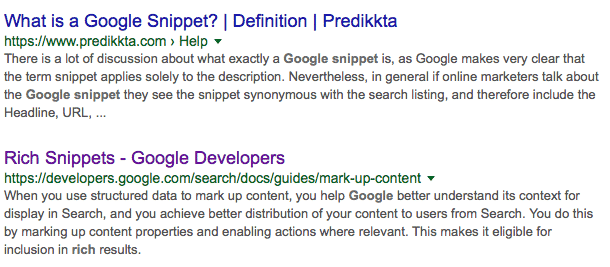This seems silly. The most mistakes (by volume) are also the easiest to fix. The top few mistakes made by website owners, website developers, web designers and webmasters boils down to just ignoring the very basic SEO techniques – and common sense.
In Search Engine Optimisation (SEO), a lot of focus is placed on getting the basics right. However, people sometimes (actually, very often) get tunnel vision and try to focus on super-optimising a website for search engines, and then forget to just get the basics right.
Matt Cutts talks about common mistakes webmasters make
This video is from 2013, but the problems are the same today – many years later. In the video, Matt Cutts talks about the most mistakes made by most websites. Google analyses many billions of web pages, and these are the things they see most often.
Luckily (in recent years) CMS platforms and SEO tools have made it much easier to detect and fix these basic problems.
Common problems and mistakes
Let’s take a quick look at some common mistakes and see how you can easily fix them.
Not having a website at all
This really goes without saying. If you don’t have a website, nobody can find you. I see so many local businesses that just don’t have a website. They just don’t have one and they usually don’t have any plans to get one.
This doesn’t make any sense. Why would your business have a telephone and not a website? Your website exists so that your customers can find you and reach you. If I had to choose, I would rather have a website than a telephone. Get a website, even if you do it yourself with an open source CMS like WordPress or Joomla.
A word of caution though, make sure you fully understand the platform you choose. This will ensure that you are not only capable of getting your website online, but that you can maintain it down the road. Our platform makes it extremely easy to get your website online, start your social pages and start marketing your business. And, if you need some advice or assistance – we are here to help.
Not making your site crawlable
If you are blocking access to your site in your robots.txt or using a noindex meta tag, that is a sure fire way to get search engines such as Google and Bing to ignore your website.
When you use a CMS such as WordPress with an SEO tool like Yoast, you will receive many SEO alerts if your site isn’t crawlable – with easy options to fix it.
Your page’s Title and META Description
Most CMS systems will automatically use the title of the page as the page title element. This helps the average blogger to avoid pages without titles. However, your titles can be greatly optimised to increase the visibility and click through rate of that page.
Your title and meta description usually determines how your website appears in Google Search Results Pages (SERPs). This is called your snippet. Take the time to look at your snippet and make sure it is displaying how you want it to. The title and description of a page should be an accurate introduction to the page. Searchers will mostly use that information to decide whether your page is what they are looking for or not.
Tweak the title and description a little every now and then, until you find the perfect fit. Keep in mind, that bookmarks primarily use the title and description to determine how the bookmark will be displayed. If someone bookmarks your page, the page title and description will be what they see months later. It should remind them what the page is about and encourage them to visit it again.

Describe what it is that you do
On the web pages of your website, describe what your business is about. What is it that you do? If you are a plumber, say that you are a plumber and that you provide X and Y plumbing services. If you do leak detection, say that – but also describe it in different words. Maybe use words like “leaking tap”, “leaking pipes” and so on in your headings, subheadings and content.
Use as many different words that people will search for as you can, whilst still keeping your content natural and readable.
Include your contact details on every page
If you want people to contact you, include your contact information – on every page. You never know where visitors land on your website. Usually, searchers do not land on your homepage. You want them to be able to contact you easily, or they might just look for the next website.
Unless you have something really special (or you are the only company providing your services in your area), people are not going to spend a lot of time trying to get a hold of you. How much time would you spend looking for someone’s contact details before giving up?
Include the right words on the page
Think about what the searcher is going to type to search for what you have. Include those words or words closely related to that.
Matt uses an example of Mount Everest. People won’t search for Mount Everest elevation, they will search for how high is Mount Everest.
Include relevant information.
In the video above, Matt uses an example of a restaurant. Relevant information, in this case, is the menu of the restaurant. A restaurant can also include a link to their reservation system so that people can book a table online. The easier it is for visitors, the more business you will get from your website.
Doctors, dentists and the like could include their appointments system so that patients can make appointments ahead of time – or at least know that there is no space available.
Also, put your business hours on the page. How often have you searched for a business and weren’t able to find out if they are open or not? Will they still be open by the time you get there? For local business websites, this is really important. If you want people to come to your store, they have to be able to find out when you will be open.
Use Google webmaster resources
Google provides free resources for webmasters and website owners. More often than not, the website owners we come across have no idea that these tools even exist. Let alone use them to find ways to improve their website.
Let’s take a quick look at a few of them, just to give you an idea of what can be done without spending money.
With Google Search Console, you can view your website’s indexing status and access tools to help you with search visibility. Google Search Console (previously Google Webmaster Tools) also allows you to view crawl statistics, HTML errors on your pages and any recommended improvements you should make. It is also used to receive messages about your website from Google. You can view pages with structured data Schema.org Markup, AMP pages and much, much more.
You can use Google Analytics to monitor traffic to your website. Ever wondered how many people actually visit your website? Google Analytics can tell you where visitors came from, which keywords they used to find your website and so on.
Publish a lot of evergreen useful content
Remember that people reach your website day and night, and they will still reach a page years after you created it. It is a good idea (although not required) to include a date when the content was published or last updated. This could help new visitors determine if the content is still relevant.
Some content will always be relevant. We call this evergreen content. The type of website you have will determine if your content is mostly evergreen or not. For example, the latest Tesla that gets released is big news today, but will it be relevant in 2 years? Probably not. Will someone search for the 2018 model in 2 or 3 years? Probably not.
However, a business that repairs fridges will probably still repair fridges in 5 years – or their website won’t exist anymore if they went out of business. A gardening shop could publish gardening tips and guides on how to raise specific plants. This will still be relevant in 10 years.
Try to include as much evergreen content on your website as you can. It will also lessen the effort of keeping content up-to-date.
How can you make your website better?
The last bit of information is probably the most important. Having a website is not a one-time effort. It is an ongoing process of continuous improvement. When you have a website, you should constantly think of ways you can improve your website. How can you make it easier for people to use? How can you make it easier for people to find? Which content is outdated and needs to be refreshed.
Well, that is it for this one. I hope this post made a small difference for someone, it certainly took some time to type. If someone only realised a single mistake they were making, or got a single new idea, it was worth it.

